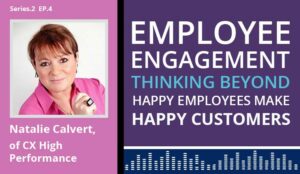Paul Cooper explains why you should be listening to your customers, and designing your processes around their needs.
One often hears the 80/20 rule quoted in business – you get 80% of profit from 20% of customers, or variations on this theme, that can even lead to a temptation to cull some customers due to a short-term application of the rule.
Well, who am I to totally decry this possibility?
However, this can often lead to generalisations that can be harmful for the overall operation of a business, especially in the long term. Key accounts can, truly, be an essential part of one’s business and they should be nurtured, supported and brilliantly serviced. But there always needs to be a balance.
High sales volumes don’t always mean high profits
Firstly, high sales volumes don’t always mean high profits, especially when hidden costs creep in, like delayed payment times, unfair demands, and an over-dominance of the total operation.
Secondly, if taken to extremes, other customers could take umbrage or suffer innocently, especially those who could grow into being key accounts themselves, or those who may have significant influence on others by such things as “word of mouth recommendation” etc.
While it is clearly essential to look after these key accounts, any attempt to try to vary levels of service or attention solely by customer account size, especially on the basis of sales, is fraught with danger.
It is well known that different customers may want different things, not necessarily similar things, and so it is much more important to know the needs and desires of each customer, regardless of size, and then see if these standards can be met by your organisation. In this way, your service offering can be broadened, and this could even attract more business as a result of your flexibility.
Issues change dramatically over quite short time periods
Most importantly, these issues change dramatically over quite short time periods. Customers go through good and bad periods, high and low times for purchasing, and the really key issue is that you are close enough to the customer to be aware of this and act accordingly. Let me give you two examples.
Students – low income, low spend, high risk credit-wise, often (usually) grow into highly responsible, well-paid, loyal and honest graduates/customers/employees. So when is the right time to try to gain that loyalty? The wrong time of course. That’s why I’ve been loyal to my bank for 40 years.
When I was in the car finance business, we paid particular attention to our debtors (more than many do today anyway!). But this was for two reasons. Firstly, in the end, most of them DO pay if you have a flexible approach to helping them through their problems. Secondly, and much more importantly, many of these people became your best customers next time around as the loan became virtually a debt of honour.
Not talking to, or listening to, their employees
The thing that most organisations are still failing to do regularly, scientifically and comprehensively, is talk to their customers, listen to their customers, and design their processes and organisations around the needs of their customers. They compound this “crime” by also not talking to, or listening to, their employees, who usually know the customers’ needs, and the organisation’s shortcomings, long before the management do, and also in many cases are customers of the organisation themselves as well.
Particularly in these difficult times, how much of management time is being spent talking to customers and learning from them? My observations are that it is abysmally too little, and in many cases, management is spending its time huddling in meetings trying to find ways out of their problems with no customer (or staff) input on which to base their decisions.
There are some incredibly clever CRM programs out there in the market at present, and they can be the secret weapon to maximising sales and profitability.

Paul Cooper
But, like most things, if they are used to crudely look for pure sales volumes, or at today’s major customers only, they are missing a trick. It is through the customer service professionals in an organisation that one will learn the most about customers, and then, hopefully, act accordingly.
Paul Cooper is an Independent Consultant & ex-Executive Director of the Institute of Customer Service.
Author: Jo Robinson
Published On: 26th Mar 2014 - Last modified: 7th Jul 2022
Read more about - Customer Service Strategy, Customer Management, Paul Cooper



































